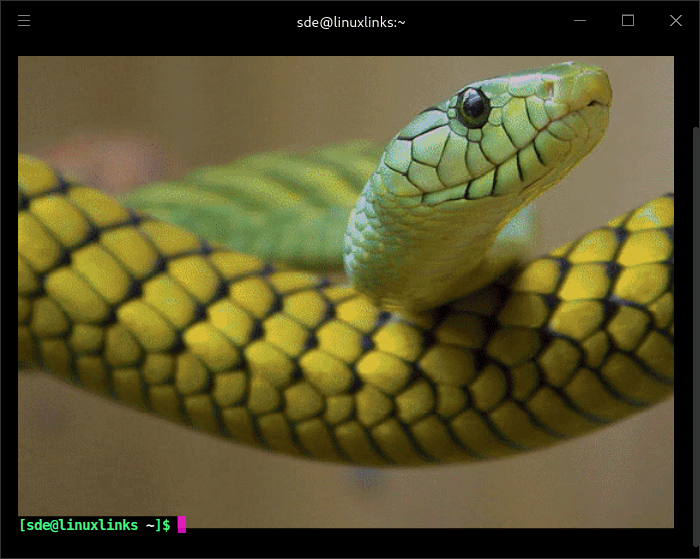Hyper is one of our most highly rated terminal emulators. It’s an Electron-based terminal built on HTML, CSS, and JavaScript.
The latest release adds support for multiple profiles and image support.
The image support consists of rendering Sixel (“six pixels”), a bitmap graphics format which consists of a pattern six pixels high and one wide, resulting in 64 possible patterns. Sixel also includes a rudimentary form of compression, using run-length encoding.
Here’s an example of the rendering in Hyper.

Hyper is cross-platform software running under Linux (including ARM), macOS, and Windows. Download this release from the project’s GitHub repository.

What’s memory usage like? Electron so presumably heavy?
ps_mem reports memory usage at startup is around 350MB. It’s significantly lower than Tabby, but much much higher than terminal emulators that don’t use Electron.
Why do crap developers care so little about system resources used by their software. It really stinks.
There’s a perception that Electron is used by lazy developers who can’t be bothered to learn the tools for the job. It’s true that Electron apps are generally heavy on system resources including RAM. That’s only really an issue if you’re running on a poor spec machine.
I tend to avoid bloated Electron apps as much as possible, although it’s hard to get away from them entirely.
Hyper lives up to its name. It is actually a good terminal emulator although I still use rxvt but that’s probably because I’m too set in my ways. I rarely try new software if there’s something I’ve used for years that does what I want.
Being able to view Sixel images in a terminal emulator sounds useful. But is it really? If I want to view images, I’ll just use a good image viewer. It’s not like Linux doesn’t have dozens of good ones.
Imho the builtin graphics support will start to shine, when REPLs start to use it for things like high resolution data plots, as it gives a much more convenient interaction model than we have currently.